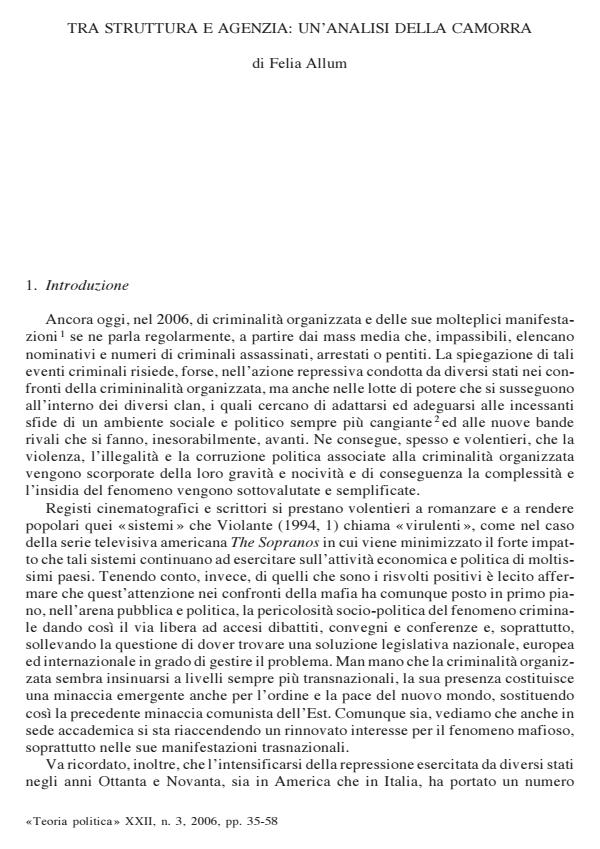Between Structure and Agency: An Analysis of Camorra
Journal title TEORIA POLITICA
Author/s Felia Allum
Publishing Year 2006 Issue 2006/3
Language Italian Pages 24 P. 35-58 File size 142 KB
DOI
DOI is like a bar code for intellectual property: to have more infomation
click here
Below, you can see the article first page
If you want to buy this article in PDF format, you can do it, following the instructions to buy download credits

FrancoAngeli is member of Publishers International Linking Association, Inc (PILA), a not-for-profit association which run the CrossRef service enabling links to and from online scholarly content.
This article presents a framework which seeks to explain social behaviour, in particular, the criminal behaviour of organised crime gangs. After having examined the existing theories and their limitations, it elaborates a new approach based on Giddens’s structuration theory. This new approach, the «interaction model», analyses society as a set of interconnecting systems within which criminal behaviour is the outcome of interaction between individual agency and structural factors. We apply it to the case of the Neapolitan camorra to show its applicability and explicative value. In particular, to explain the different camorras of the post-war period, from Pasquale ‘e Nola and Alfredo Maisto to Raffaele Cutolo’s Nuova Camorra Organizzata, Lorenzo Nuvoletta’s Nuova Famiglia, Carmine Alfieri’s Confederation, Gennaro Licciardi’s Secondigliano Alliance and the more recent De Lauro clan. It concludes by arguing that structure-agency approaches have a lot to offer.
Felia Allum, Tra struttura e agenzia: un'analisi della camorra in "TEORIA POLITICA" 3/2006, pp 35-58, DOI: